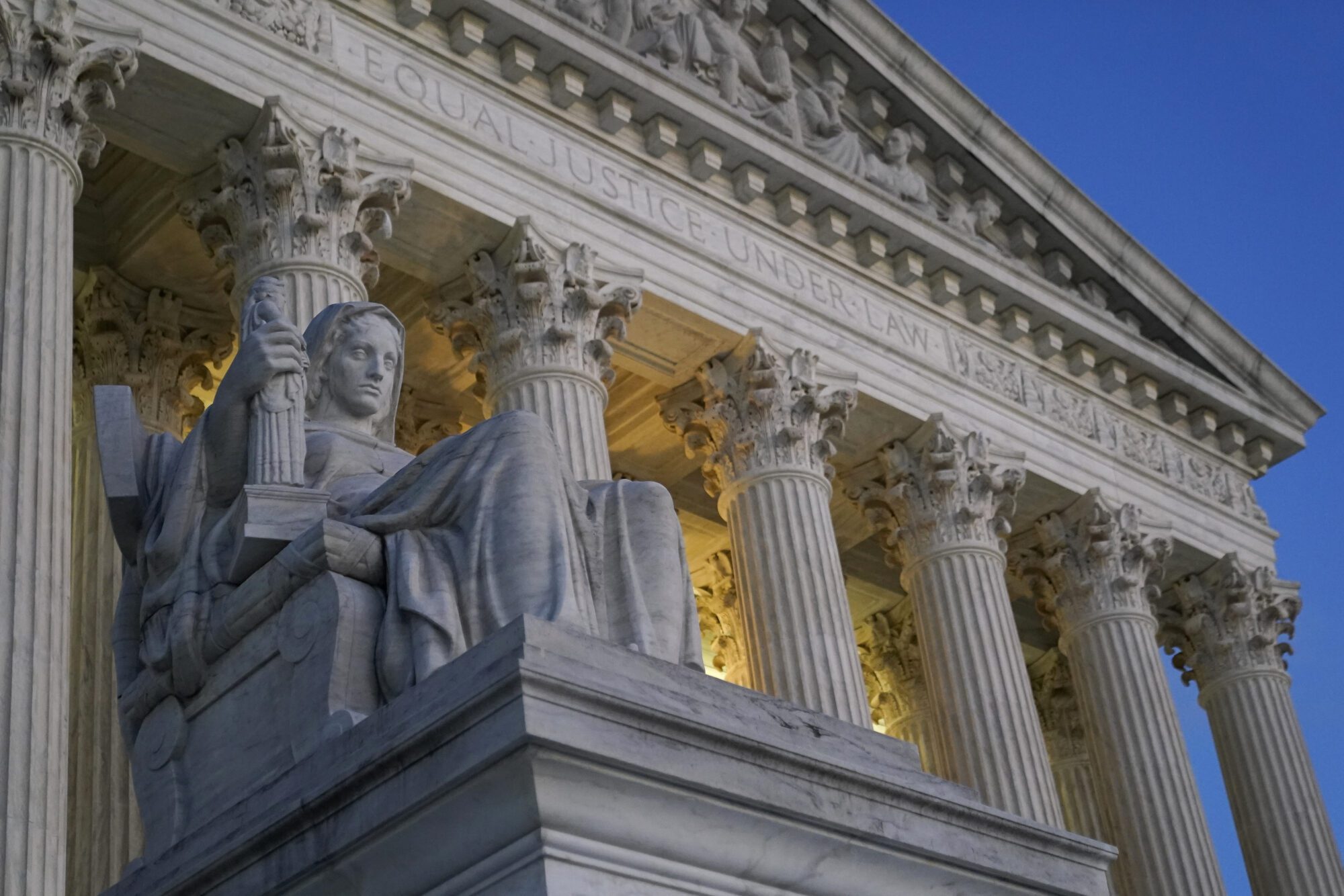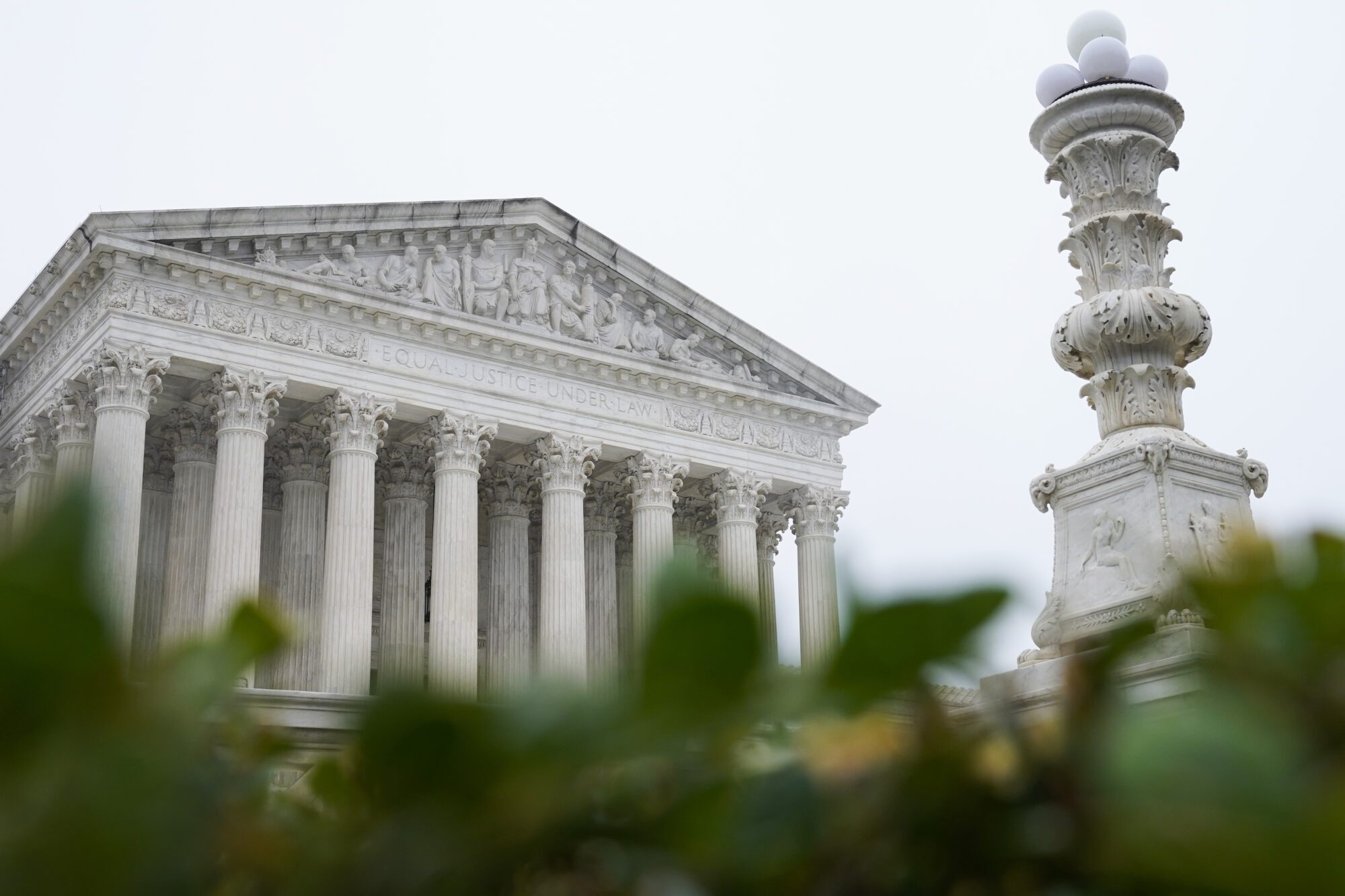
FILE- Light illuminates part of the Supreme Court building on Capitol Hill in Washington, Nov. 16, 2022. (AP Photo/Patrick Semansky, File)
- Justice Brett Kavanaugh pressed civil rights lawyer Janai Nelson on whether the time has come to end the use of race-based districts under the Voting Rights Act, rather than “allowing it to extend forever.”
WASHINGTON (AP) — The Supreme Court on Wednesday appeared inclined to limit the use of the Voting Rights Act to force states to draw electoral districts favorable to minority voters.
The court’s six conservative justices, to one degree or another, seemed like they would vote to effectively strike down a Black majority House district in Louisiana because it relied too heavily on race.
Such an outcome could mark a fundamental change in the voting rights law, the centerpiece legislation of the Civil Rights Movement, that succeeded in opening the ballot box to Black Americans and reducing persistent discrimination in voting.
A ruling for Louisiana could open the door for legislatures to redraw congressional maps across the South, potentially boosting Republican electoral prospects by eliminating majority Black and Latino districts that tend to favor Democrats.
Just two years ago, the court, by a 5-4 vote, affirmed a ruling that found a likely violation of the Voting Rights Act in a similar case over Alabama’s political boundaries. Chief Justice John Roberts and Justice Brett Kavanaugh joined their three more liberal colleagues in the outcome.
But Roberts and Kavanaugh struck a different tone Wednesday, especially in their questions to civil rights lawyer Janai Nelson.
Roberts suggested that the Alabama decision was highly focused on its facts and should not be read to require a similar outcome in Louisiana.
Kavanaugh pressed Nelson on whether the time has come to end the use of race-based districts under the Voting Rights Act, rather than “allowing it to extend forever.”
The court’s liberal justices focused on the history of the Voting Rights Act in rooting out discrimination in voting. Getting to the remedy of redrawing districts only happens if, as Justice Elena Kagan said, a court finds “a specific identified, proved violation of law.”
A mid-decade battle over congressional redistricting already is playing out across the nation after Republican President Donald Trump began urging Texas and other GOP-controlled states to redraw their lines to make it easier for the GOP to hold its narrow majority in the House.
The court’s conservative majority has been skeptical of considerations of race, most recently ending affirmative action in college admissions. Twelve years ago, the court took a sledgehammer to another pillar of the landmark voting law that required states with a history of racial discrimination to get approval in advance from the Justice Department or federal judges before making election-related changes.
The court has separately given state legislatures wide berth to gerrymander for political purposes, subject only to review by state supreme courts. If the Supreme Court now weakens or strikes down the Voting Rights Act’s Section 2, states would not be bound by any limits in how they draw electoral districts. Such a result would be expected to lead to extreme gerrymandering by whichever party is in power at the state level.
The court’s Alabama decision in 2023 led to new districts there and in Louisiana that sent two more Black Democrats to Congress.
Now, though, the court has asked the parties to answer a fundamental question: “Whether the state’s intentional creation of a second majority-minority congressional district violates the Fourteenth or Fifteenth Amendments to the U.S. Constitution.”
In the first arguments in the Louisiana case in March, Roberts sounded skeptical of the second majority Black district, which last year elected Democratic Rep. Cleo Fields. Roberts described the district as a “snake” that stretches more than 200 miles (320 kilometers) to link parts of the Shreveport, Alexandria, Lafayette and Baton Rouge areas.
The court fight over Louisiana’s congressional districts has lasted three years.
The state’s Republican-dominated legislature drew a new congressional map in 2022 to account for population shifts reflected in the 2020 census. But the changes effectively maintained the status quo of five Republican-leaning majority white districts and one Democratic-leaning majority Black district.
Civil rights advocates won a lower-court ruling that the districts likely discriminated against Black voters.
The state eventually drew a new map to comply with the court ruling and protect its influential Republican lawmakers, including House Speaker Mike Johnson. But white Louisiana voters claimed in their separate lawsuit that race was the predominant factor driving it. A three-judge court agreed, leading to the current high court case.








